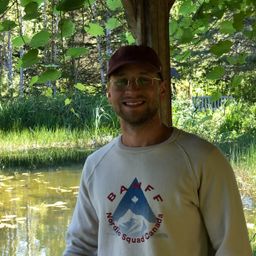
Sessions in which Laurent Turner participates
Monday 10 May, 2021
Sessions in which Laurent Turner attends
Not scheduled
Background: Cellular senescence, cell growth cycle arrest, is a marker of cellular aging. Obesity is considered a disease of accelerated aging as it shares several co-morbidities with aging, such as type 2 diabetes mellitus (T2DM). Objective: To determine regional differences in markers of cellular senescence and how these compare in obese individuals with and without T2DM. Methods: Pre-menopausal females undergoing bariatric surgery were categorized as obese-metabolically healthy...
Postural stability is a complex skill dependent upon the coordination of motor, sensory and cognitive systems (Woollacott & Shumway-Cook, 2002). The purpose of this project was therefore to explore how older adults' balance performance is impacted by increased cognitive load, hearing loss, and simulated vision loss. Twenty-seven older adults between the ages of 56 and 90 years (M = 74.74, SD = 9.51) were tested. Participants underwent standard sensory acuity, and cognitive functioning tes...
Context: While soccer is considered a lateral dominant sport, few studies have examined if limb dominancy leads to asymmetries in body composition and their possible associations with injury (1). Objective: The purpose of this study was to 1) investigate body composition morphological asymmetries in male and female university-level soccer players, and 2) examine whether the degree of body composition asymmetry is associated with lower leg injuries (LLI) and lower back pain (LBP...
Background: Different exercise intensity has a various effect on the immune system. Lactate is one of the factors that releases in exercise, on one hand, higher lactate concentration not also apoptosis of peripheral blood mononuclear cells (PBMCs) decrease but also the survival of the PBMCs increase (Elsaser et al., 2017), on the other hand...
Background: Recovery kinetics following cardiopulmonary exercise testing (CPET) have yet not been described in people with OSA and comorbid insomnia (COMISA). Our objectives were to i) describe heart rate recovery (HRR), oxygen recovery slopes (VO2/t) and time to half recovery of VO2max (T½) following CPET in COMISA; and ii) investigate their response to either one of the following: 16 weeks of exercise training (Ex) or 8 week-relaxation control intervention followed by 8 weeks of exercise an...
According to the oxidative stress theory, reactive species are key drivers of inflammation and cardiovascular disease (1). The electron transport chain of the mitochondria accounts for ≈90 of the intracellular radioactive oxygen species (2). Interestingly, while low-carbohydrate high-protein diets promote weight loss, animal experiments show that they could also lead to mitochondrial dysfunction and therefore, oxidative stress and inflammation (3). In parallel, research in the last decade has...
Background: During atherosclerotic plaque development, vascular smooth muscle cells (VSMC) undergo dedifferentiation, resulting in a synthetic, less contractile progenitor state. This transition is marked by changes in mitochondrial respiration and increased reactive oxygen species (ROS) production. These changes in bioenergetics play a critical role in atherogenesis via facilitation of VSMC migration towards the intima. Objective: The objective of this study was to evaluate t...
Monday 10 May, 2021
The following posters will be presented:11:00am-11:05amThe Potential of Probiotics in Preventing Diet-Induced Mitochondrial DysfunctionPresented by: Antoine St-Amant11:05am-11:10amBody composition asymmetries in university ice hockey players and their implications for lower back pain and lower limb injuryPresented by: Tiziana Resta11:10am-11:15amCellular senescence is similar between regio...
Tuesday 11 May, 2021
This talk will discuss sleep of children as they transition to teens in the context of research that examines associations between brain systems that regulate sleep/wake behavior—the circadian timing system and the sleep homeostatic system. For example, adolescents’ circadian timing becomes later; their sleep “need” does not diminish; their sleep homeostatic system is also modified in a way that can modify sleep timing. A major implication of this work has been in the area of education, sp...
Wednesday 12 May, 2021
With aging, there are declines in sensorimotor functions such as fine motor control, gait and balance. Moreover, the largest age differences in brain structure are observed in the motor and somatosensory cortices. A key question of interest is why some individuals are more resilient than others to these functional declines. I will describe my findings showing that, in some cases, individual differences in sensorimotor system structure and function are associated with motor performance meas...
Disorders of gait and cognition are central to many age related conditions and diseases. While there are medications available to treat some of these disorders, they have significant side effects and limited effectiveness. A better understanding of the inter-relationship between motor and cognitive function in aging may help guide the development of new therapeutic approaches for conditions such as frailty, mobility disability and dementia. In this talk, I will discuss non-pharmacological ...
Thursday 13 May, 2021
An innovative workshop aimed to help attendees develop effective presentation skills. Colleen brings a unique actor’s perspective to communicating with an audience. Effective communication starts with self-awareness, authenticity and passion for the message. The key is learning how to convey these elements in a manner that connects and resonates with the audience. This workshop is highly interactive and includes movement, visualization, warm-up exercises, practice presentations and...



